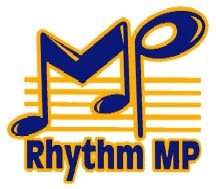
Music is about creativity, imagination and self-expression.
Schools should be places where students find learning fun and enjoyable. There should be freedom of expression and an atmosphere of exchange of ideas and debate.
Program details:
1. DISCOVER YOUR TALENTS:
Experience the joy of creating music
2. MUSICAL PERFORMANCE:
Exploring and discovering chords to be used with the melody
Program details:
1. DISCOVER YOUR TALENTS:
Experience the joy of creating music
2. MUSICAL PERFORMANCE:
Exploring and discovering chords to be used with the melody
- For students with music background
- Duration: 2 hours
- Things to bring: pencils and erasers
Variations of chord progressions:
Secondary chords: IIm, IIIm, VIm & VIIdim
Chord: I & V7
This is the simplest chord progression to use. Chord I to V7 and V7 to I (Perfect Cadence) will suit any song composed using the notes C to G.

Chord: I, IV & V7
These form the primary chords that are diatonic to all major scales. Adding Chord IV will add more harmony to the tune.

Chord: I, IIm & V7
The use of IIm (minor) introduces the sound of a minor chord. The tonality of a minor chord offers a different soundscape from the major and dominant 7th sounds above. From here on, the harmony starts to get more interesting by exploring sounds from other chords.


Chord: I, IIm, IIIm & V7
Chord IIIm is introduced here. This chord has its limitations and may not sound that good in certain circumstances.

Chord: I, IIm, IIIm, IV, V7 & Vim
Having more chords to use allows more exploration of chords. A mix of primary and secondary chords allows interesting harmony to be created for a melody. The samples below are just some ideas that are possible. Explore the given chords and create a chord progression that you like.


Of course, there are other chords possible but diatonic chords to the scale are the safest to use especially in a situation like the WYOM project, where you have to add chords to the 8-bar compositions that your students have created to perform them.






.jpg)